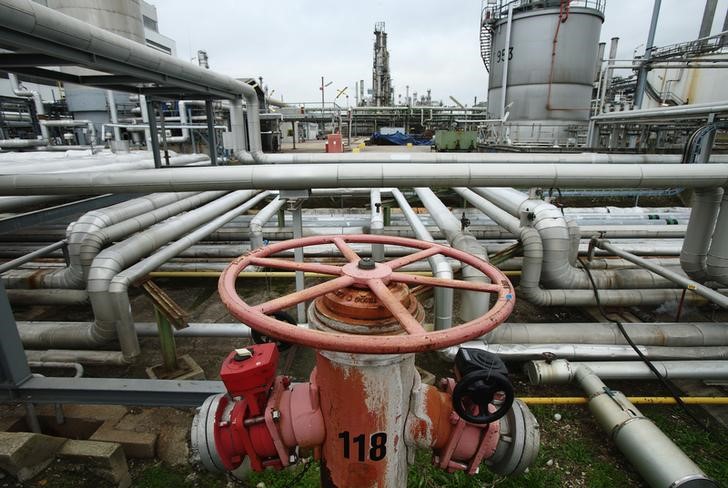By Barani Krishnan
Investing.com - It’s officially been a month since the oil market turned and the rally isn’t slowing, with the largest U.S. crude build in five weeks ignored Thursday by traders more drawn to an unexpected decline in gasoline stockpiles.
New York-traded West Texas Intermediate, the benchmark for U.S. crude, settled up 90 cents, or 2.7%, at $33.17 per barrel.
Brent, the London-traded global benchmark for oil, settled up 55 cents, or 1.6%, at $35.29.
WTI is up 240% from its April 28 low of $10.07, while Brent has doubled in the same time. Both benchmarks are off 45% for the year though, as demand for fuel products struggle to return to normal after the broad reopening of the U.S. economy from lockdowns imposed over the coronavirus.
Much of the crude rally was driven by cuts in oil rigs and well shut-ins by U.S. drillers responding to the collapse in fuel demand. Larger production cuts by OPEC, which aims to remove 9.7 million barrels per day from global output, has also helped.
Some analysts said the market was still some way off to achieving normalcy, and prices appeared frothy after four weeks of nearly non-stop gains.
“We’re still about 20% below what constitutes typical fuel demand for this time of year,” said John Kilduff, founding partner at New York energy hedge fund Again Capital. “I think that should be the guidance for those wanting to take this rally even higher.”
Thursday’s gains came as the Energy Information Administration reported that U.S. crude stockpiles rose by nearly 8 million barrels for the week ended May 22, compared with analysts’ forecasts for a drop of almost 2 million barrels.
In the previous week to May 15, crude stockpiles dropped by nearly 5 million barrels, the EIA said.
The rise represented the largest build in crude stocks since the 15 million barrels noted during the week to April 20.
“Crude inventories have shown a solid rebound, driven by rampant Saudi crude imports into the U.S. Gulf Coast,” Matthew Smith, analyst at New York-based oil cargoes tracker Clipperdata said, referring to a Saudi flotilla of more than 20 million barrels of crude that arrived at the U.S. coast earlier this month.
Smith said the latest build has lifted total U.S. oil inventories to just a whisker below the March 2017 record high of 535.5 million barrels.
Tariz Zahir, managing member at Tyche Capital Advisors in Long Island, New York, said last week’s 8-million build in crude stockpiles was surprising, given the near 3-million barrel drop in inventories at the Cushing, Ok. hub that stores oil delivered against expiring WTI contracts.
“Definitely (it) was a surprise on the crude end with such a large build although we did see a large draw in Cushing,” Zahir said. “With the press reports out of Russia saying they want to ease back on cuts will be interesting to see the levels by all countries OEC and non-OPEC what they do in the shadow of an upward trend in the last few weeks.”
Traders based Thursday’s market action on the 724,000 barrels decline in gasoline stockpiles versus a forecast build of 100,000. In the previous week to May 15, gasoline stockpiles rose by 2.8 million.
The gasoline draw was one of the few bright spots in the EIA report, which also noted a 5.5 million-barrel build in distillates inventories against forecasts for a rise of just around 1.8 million. In the previous week to May 15, distillate stockpiles rose by 3.8 million.
Distillates, which include products such as diesel and jet fuel, have been the weakest component of the U.S. oil complex, accounting for nearly 42 million barrels in inventory gains since mid-April. Even with U.S. reopenings from Covid-19 lockdowns, demand for diesel and jet fuel is anemic few people have returned to taking public transportation or flights due to lingering fears about infection.
